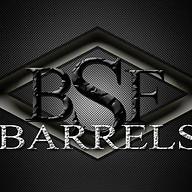We are discussing science. Barrel building, gun making, ballistics, and everything in this forum is derived from math and science.
Opinions are like *ssholes, we all have them, including me! My opinion is no better or worse than his.
He made a statement - Wby barrels are better than aftermarket barrels. Opinion.
I asked for data to support it. Not an unrealistic ask.
OMG I made a grammar error - guess Ill send my PhD back! LMAO
Yes, you did become a hijacker - appreciate the admittance.
In order to explain it fully I would have to write a 6 page response so not gonna happen, know I am speaking from personal carbon barrel building experience gained in working with one of the most prominent carbon barrel makers in the U.S..
- We have specific data showing heat transfer, POI shift under high temp strings of fire, thermal expansion rates, cold barrel performance, and barrel life.
- That data was then reviewed by Gov agencies and tested within their requirements. The data was confirmed and supported through that testing
- The barrels, the resin, the carbon, and the entire process were manufactured, assembled, and tested in one house and through one company
- Carbon fiber is 5x lighter and 2x stronger than steel
- Carbon barrels are a wrap around the outside of a steel liner. Wraps can vary, process can vary, the thickness of the steel barrel liner can vary, type of carbon used can vary - there are about 50 different types of carbon that can be used in a barrel.
- Carbon barrels create a stiffer and more repeatable barrel signature through the firing process, carbon doesn't wear out like steel and with the right build process, will move heat away from the center of the barrel faster than a steel barrel of the same contour - less "barrel whip" over time - a sendero carbon barrel is going to be stiffer than a #4 steel barrel and have less barrel whip
- All Carbon barrels are glued together and also to the steel barrel liner. The "glue" or resin can come from 30 different places and can have varying stiffness and heat resistant properties - hence varied barrel processes and build types - ability to control and move heat
- Carbon barrels theoretically have less POI shift than a steel barrel under higher heat conditions, due to many of the properties I outlined above
- POI shift is a variable action that can only be controlled in a jig, unless you are seeing something wild. Most people who think they see POI shift find out its not the rifle barrel in most cases, unless you are shooting a #2 contour in high rates of fire and then yeah, you are going to see significant POI shift. Lots of variable. Can carbon barrels POI shift yes and in the early days of building, say anything before about 2014, they did. Now, its pretty rare unless you are shooting a lot and at a high rate of speed.
- PRS shooters use both carbon and steel barrels. There is no rhyme or reason who shoots what frankly, its about what is accurate and repeatable (its also about if they are sponsored or buying the barrel yourself) so if they aren't worried too much about day to day POI, should you be?
So, to talk about any barrel being better or more accurate is a misnomer. A 1/2 MOA barrel is a 1/2 MOA barrel. The barrel manufacturing process and how it moves heat compared to the stiffness of the barrel; also how the resin or overall stiffness of the barrel remains constant due to heat. We are talking about constant heat above 200 degrees or so . The more heat, the more POI Shift in basic terms, up to a point that the barrel begins to melt. The carbon doesn't melt, the resin holding it together begins to melt. Every single barrel manufacturer is chasing the holy grail of making a carbon barrel that will survive the heat from a crew served automatic weapon for the military. No one is there yet.
To say that barrel from maker A shifts more or less than a barrel from maker B is a one time personal experience that has too many variables to say that every single barrel from either maker is susceptible to POI shift more or less. Just like steel, it is an individual barrel issue.
I personally have carbon barrels from multiple makers and all of them shoot. That said, I have also had a bad barrel from one of them, it was too tight and created too much pressure and I had to return it.
IMO and IME, any barrel will shoot accurately in the right conditions, with the right load, and with the right shooter behind it. Steel, carbon, whatever. That same barrel might not shoot in the wrong conditions with the wrong load and the wrong person behind it. So if you have the money and need to save the weight, get a carbon barrel. If you are going to expect less POI shift under high rates of continual fire at high heat, get a carbon barrel. If you are going to go to the range and shoot 25 rounds in an hour and then take that rifle hunting, and shoot maybe 2 times more, you may not need a carbon barrel.
 www.bsfbarrels.com
www.bsfbarrels.com
